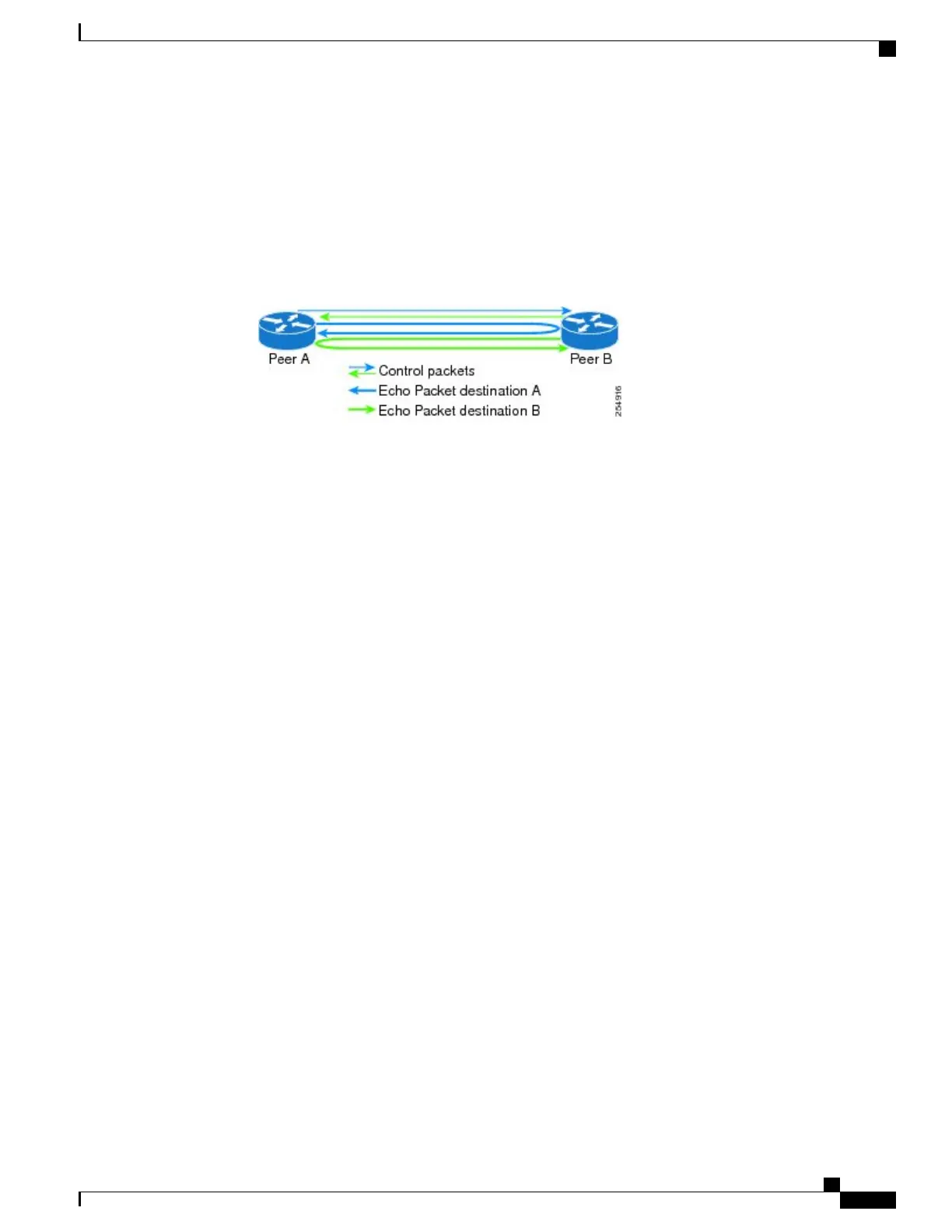When BFD is running asynchronously with echo packets (Figure 36), the following occurs:
•
BFD echo packets are looped back through the forwarding path only of the BFD peer and are not
processed by any protocol stack. So, packets sent by BFD router “Peer A” can be sent with both the
source and destination address of Peer A.
•
BFD echo packets are sent in addition to BFD control packets.
Figure 11: BFD Asynchronous Mode With Echo Packets
For more information about control and echo packet intervals in asynchronous mode, see the BFD Packet
Intervals and Failure Detection.
BFD Packet Information
BFD Source and Destination Ports
BFD payload control packets are encapsulated in UDP packets, using destination port 3784 and source port
49152. Even on shared media, like Ethernet, BFD control packets are always sent as unicast packets to the
BFD peer.
Echo packets are encapsulated in UDP packets, as well, using destination port 3785 and source port 3785.
The BFD over bundle member feature increments each byte of the UDP source port on echo packets with
each transmission. UDP source port ranges from 0xC0C0 to 0xFFFF. For example:
1st echo packet: 0xC0C0
2nd echo packet: 0xC1C1
3rd echo packet: 0xC2C2
The UDP source port is incremented so that sequential echo packets are hashed to deviating bundle member.
BFD Packet Intervals and Failure Detection
BFD uses configurable intervals and multipliers to specify the periods at which control and echo packets are
sent in asynchronous mode and their corresponding failure detection.
There are differences in how these intervals and failure detection times are implemented for BFD sessions
running over physical interfaces, and BFD sessions on bundle member links.
BFD Packet Intervals on Physical Interfaces
When BFD is running over physical interfaces, echo mode is used only if the configured interval is less than
two seconds.
Cisco ASR 9000 Series Aggregation Services Router Routing Configuration Guide, Release 5.1.x
OL-30423-03 179
Implementing BFD
BFD Packet Information

